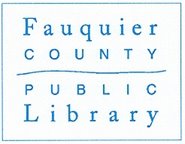
Third Culture Holiday Reading 2007 list
(annotations from the Fauquier Library Catalog and/or publisher descriptions)
Endless Universe: Beyond the Big BangThe Big Bang theory--the leading explanation for the origin of the universe--posits that space and time sprang into being about 14 billion years ago in a hot, expanding fireball of nearly infinite density. Over the last three decades, the theory has repeatedly had to be revised to address such issues as how galaxies and stars first formed and why the expansion of the universe is speeding up--let alone what caused the Big Bang in the first place. This book presents a bold new cosmology: Steinhardt and Turok recount remarkable developments in astronomy, particle physics, and superstring theory that together form the basis of their groundbreaking "Cyclic Universe" theory. According to this picture, the Big Bang was not the beginning of time, but the bridge to a past filled with endlessly repeating cycles, each accompanied by the creation of new matter and the formation of new galaxies, stars, and planets.
Why Beauty is Truth: a history of symmetry Mathematics, physics and the universe.
The Black Swan: the impact of the highly improbable Examines the role of the unexpected, discussing why improbable events are not anticipated or understood properly, and how humans rationalize the black swan phenomenon to make it appear less random.
Good calories, bad calories Argues that refined carbohydrates are the ultimate cause of obesity, heart disease, diabetes, and even cancer; that overeating and sedentary behavior are side effects of increased insulin; and that removing these carbohydrates from one's diet is the only way to lose weight.
Death by black hole: and other cosmic quandaries A collection of favorite essays on the cosmos, written by a well-known American Museum of Natural History astrophysicist and author of Origins, includes the title essay, "Holy Wars," "The Search for Life in the Universe," and "Hollywood Nights."
Avoid boring people: lessons from a life in science by James Watson A scientific memoir by the co-discoverer of DNA describes a life devoted to the pursuit of knowledge, offering valuable lessons about how to get the most out of college, select a career, manage others, and keep one's work relevant.
The World without us
You've watched it on TV, now read what would happen to Earth if the human presence was removed, from the objects that would vanish without human intervention to those that would become long-lasting remnants of humankind.
Evolution for Everyone: how Darwin's theory can change the way we think about our lives
What is the biological reason for gossip?
For laughter? For the creation of art?
Why do dogs have curly tails?
What can microbes tell us about morality?
These and many other questions are tackled by renowned evolutionist David Sloan Wilson in this witty and groundbreaking new book. With stories that entertain as much as they inform, Wilson outlines the basic principles of evolution and shows how, properly understood, they can illuminate the length and breadth of creation, from the origin of life to the nature of religion. Now everyone can move beyond the sterile debates about creationism and intelligent design to share Darwin’s panoramic view of animal and human life, seamlessly connected to each other.
Evolution, as Wilson explains, is not just about dinosaurs and human origins, but about why all species behave as they do—from beetles that devour their own young, to bees that function as a collective brain, to dogs that are smarter in some respects than our closest ape relatives. And basic evolutionary principles are also the foundation for humanity’s capacity for symbolic thought, culture, and morality.
In example after example, Wilson sheds new light on Darwin’s grand theory and how it can be applied to daily life. By turns thoughtful, provocative, and daringly funny, Evolution for Everyone addresses some of the deepest philosophical and social issues of this or any age. In helping us come to a deeper understanding of human beings and our place in the world, it might also help us to improve that world.
Proust and the squid: the story and science of the reading brain A developmental psychologist evaluates the ways in which reading and writing have transformed the human brain, in an anecdotal study that reveals the significant changes in evolutionary brain physiology throughout history.
The Lucifer effect: understanding how good people turn evil What makes good people do bad things? How can moral people be seduced to act immorally? Where is the line separating good from evil, and who is in danger of crossing it?
Renowned social psychologist Philip Zimbardo has the answers, and in The Lucifer Effect he explains how–and the myriad reasons why–we are all susceptible to the lure of “the dark side.” Drawing on examples from history as well as his own trailblazing research, Zimbardo details how situational forces and group dynamics can work in concert to make monsters out of decent men and women.
Zimbardo is perhaps best known as the creator of the Stanford Prison Experiment. Here, for the first time and in detail, he tells the full story of this landmark study, in which a group of college-student volunteers was randomly divided into “guards” and “inmates” and then placed in a mock prison environment. Within a week the study was abandoned, as ordinary college students were transformed into either brutal, sadistic guards or emotionally broken prisoners.
By illuminating the psychological causes behind such disturbing metamorphoses, Zimbardo enables us to better understand a variety of harrowing phenomena, from corporate malfeasance to organized genocide to how once upstanding American soldiers came to abuse and torture Iraqi detainees in Abu Ghraib. He replaces the long-held notion of the “bad apple” with that of the “bad barrel”–the idea that the social setting and the system contaminate the individual, rather than the other way around.




